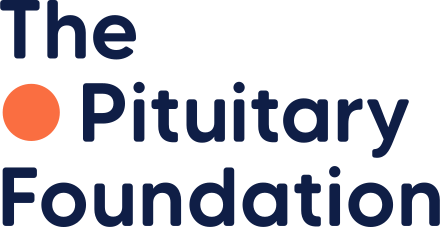How is acromegaly treated?
Treatment options include surgery, medical therapy and radiotherapy. The goals of treatment are to reduce excess GH, relieve pressure that the growing tumour may be exerting, e.g on the eye nerve, preserve normal pituitary function and improve symptoms of acromegaly.
Studies show that if left untreated people with acromegaly are more likely to suffer from diabetes, high blood pressure and heart problems, as well as having a reduced life expectancy compared to the normal population. These can be improved to normal after the successful treatment of acromegaly.
Surgery
Some people may need surgery to remove the tumour. The operation is usually carried out by making a small cut above the upper teeth behind the upper lip, or through the nose. This is called Trans-sphenoidal Surgery. By going behind the nose like this, the surgeon can see the pituitary gland without having to operate on the main part of the head. In some centres an Endoscopic approach is used – fine tubes called endoscopes are pushed through the back of the nose, involving a small incision.
Most people can be treated very successfully this way, although results are usually better if your tumour is small. The operation takes about an hour and a half. People tend to remain in hospital for three to five days. For the best results it is important to be referred to an experienced pituitary surgeon who operates on 20 or more cases per year.
Surgery will normally lower your growth hormone levels, but in some instances the acromegaly is not cured. In such cases, consideration will be given to treating you further with drug therapy and/or radiotherapy.
Treatment with drugs
There are three types of drugs for treating acromegaly – each act by different mechanisms:
- Somatostatin Analogues work on specialist markers (somatostatin receptors) to inhibit GH release from the pituitary tumour.
- Dopamine Agonists work on alternative markers (dopamine receptors) on the surface of the tumour to inhibit GH release from the tumour by a different mechanism.
- Pegvisomant is a newer drug which works differently and blocks the action of GH and reduces IGF-1 levels.
Somatostatin Analogues
Somatostatin analogues require injections. There are two somatostatin analogues available for the treatment of acromegaly:
- Octreotide (brand name Sandostatin, manufactured by Novartis). Octreolin is an oral formulation of injectable Octreotide
- Lanreotide (brand name Somatuline, manufactured by Ipsen).
Octreotide
Octreotide can be given once a month deep into muscle (intramuscularly) for the long-acting preparation (Sandostatin LAR, Novartis), or, occasionally, three times a day under the skin (subcutaneously).
The short-acting preparation of octreotide is provided as ampoules or vials, which can be used for several doses. It is normally kept in the fridge, but must be removed and come naturally to room temperature before use.
The long-acting preparation is usually given by a nurse at your GP surgery.
Lanreotide
Lanreotide (Somatuline Autogel, Ipsen) is available as a once per month depot injection. A depot injection means it is a slow release medication. It can be given by the patient.
Octreotide and Lanreotide help the symptoms of acromegaly by reducing growth hormone levels into the target range of less than 1.8/2 ug/l in about half of patients.
When you first start taking somatostatin analogues, it may give you stomach colic or diarrhoea, but these effects usually wear off within a few days. Some patients find that stomach problems improve if they do not inject for about two hours after eating. In the longer term both may cause gallstones, but these very seldom cause problems.
Dopamine agonists
There are several dopamine agonists available, all are taken by mouth but only two are widely used:
- Cabergoline (brand name Dostinex, manufactured by Pfizer)
- Bromocriptine (brand name Parlodel, manufactured by Novartis)
Cabergoline, a newer long-acting dopamine agonist that causes fewer side-effects than bromocriptine, appears to be more effective in lowering GH and IGF-I levels, and needs to be taken only twice weekly. It is not licensed for the treatment of acromegaly but is an accepted and widely used treatment. Dopamine agonists used in very high doses to treat Parkinson’s disease have been shown to cause heart valve changes in some patients but studies in patients receiving cabergoline for acromegaly have been reassuring in this respect and no significant heart valve changes have been reported.
Usually people using Cabergoline for pituitary conditions will need to have an echocardiogram (heart scan) at the beginning of treatment. Your endocrinologist or GP will arrange this for you. Bromocriptine usually needs to be taken two or three times a day.
Unfortunately, although dopamine agonists are taken by mouth, they are often less effective than somatostatin analogues which have to be injected. They may cause you to be constipated, although this can be alleviated by increasing the fibre in your diet. At the beginning of treatment, you may also suffer nausea or dizziness when you first stand up. These effects also tend to wear off with time.
Pegvisomant
Pegvisomant (Somavert, Pfizer) is a completely different way of treating acromegaly.
Pegvisomant is a blocker of the action of GH. It does not try to inhibit the release of GH from the pituitary into the blood but instead stops the production of GH.
This should block all the unwanted effects of GH and studies in patients with acromegaly suggest it is very effective. It is given as a daily subcutaneous (under the skin) injection. It is currently used for people where the more traditional treatments have not been successful.
Radiotherapy
Radiotherapy (treatment with radiation) might be needed if not all the tumour could be removed in surgery or if it was not possible for you to have an operation.
You will attend the clinic on two or three occasions to have a special mask or fixation device made. This is a clear plastic mask or device which is used to hold your head still and ensure the radiation beams are correctly aligned.
Radiotherapy will be planned and carried out with extreme care. Using MRI or CT scans the radiotherapy team will spend time planning exactly where the X-rays will be aimed.
Treatment – very low doses of radiation – is usually given through three parts of the head – one on top of your scalp, and one area just in front of each ear.
The treatment itself usually comprises 5 – 6 weeks of daily treatment (Monday to Friday). It may take several months, or even years, after the treatment for the effects of radiotherapy to be complete. While you are waiting for this, you may be given drug treatment to improve control of GH levels.
Improvements in pituitary scanning and computerised control of radiotherapy mean that new forms of finely focused, high dose radiotherapy (stereotactic) are being developed. This treatment is not suitable for all pituitary tumours and its benefit is being evaluated.
Stereotactic radiotherapy allows much higher doses of radiation to be given to a part, or occasionally the whole, of the tumour often in a single session. The larger dose of radiation means that your GH levels come under control much more quickly, maybe after months rather than years. The Gamma Knife, the best-known form of stereotactic radiotherapy, is currently not widely available in the UK.
Effective treatment
Once treatment is successful, you should notice that the soft tissue in your hands and feet decrease in size and patients often notice that their facial features gradually return towards normal.
If you were suffering from excess sweating this should decrease and if you had diabetes mellitus, it should improve, or disappear altogether. Your headaches will usually improve and so will any visual disturbances that may have been present beforehand. If you snored, it should be improved. Some bone growth will usually decrease.










